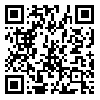BibTeX | RIS | EndNote | Medlars | ProCite | Reference Manager | RefWorks
Send citation to:
URL: http://jhsw.tums.ac.ir/article-1-5238-en.html

 , A. Mazloumi *
, A. Mazloumi * 
 2, S. Mamhood Khani3
2, S. Mamhood Khani3 
 , Z. Kazemi4
, Z. Kazemi4 
 , M. Hosseini5
, M. Hosseini5 
 , M. Abbasinia3
, M. Abbasinia3 
 , S. Fahang Dehghan3
, S. Fahang Dehghan3 

2- Assistant Professor, Department of Occupational Health Engineering, School of Public Health, Tehran University of Medical Sciences, Tehran, Iran ,
3- MS.c, Department of Occupational Health Engineering, School of Public Health, Tehran University of Medical Sciences
4- MS.c in Ergonomics, Department of Occupational Health Engineering, School of Public Health, Tehran University of Medical Sciences, Tehran, Iran
5- Professor, Department of Epidemiology and Biostatistics, School of Public Health, Tehran University of Medical Sciences
Introduction: Working in hot and inappropriate climate condition is one of the most common problems of occupational health which can lead to heat induced diseases and even death. Heat stress may impair the cognitive processes involved in decision-making and converting simple tasks to complex ones. The aim of present study was to assess selective attention and reaction time among workers in a casting unit of a car manufacturing industry and to investigate the effects of heat stress on mentioned variables.
.
Material and Method: In this retrospective cohort study 70 workers from a hot industry were selected in two of exposed and control groups. First, demographic questionnaire was completed for each of the participants and noise and light were measured as the likely confounding factors. Stroop test 1, 2, and 3 were done before and during the work in order to determine the effects of heat on selective attention and reaction time. Besides,WBGT were measured at the ankle, waist, and head levels. Data were analyzed using SPSS software, version 18.
Result.: WBGT measurements showed that the mean WBGT were 33 and 16.7 for the exposed and not exposed groups, respectively. Moreover, no significant relationships were observed between test duration, reaction time, and number of errors in Stroop tests 1 and 2 and the level of heat (P-value<0.0001). However, the mentioned variables had a significant positive correlation with Stroop test 3. Additionally, for exposed group variables of test duration, reaction time, and number of errors in Stroop 3 were significantly higher than those of control group.
.
Conclusion: According to the findings in present study, heat stress causes an increase in reaction time and a decrease in selective attention. Thus, heat can be assumed as a stressor in hot work environments and the heat should be taken into account while design of job and tasks which needed selective attention or reaction time.
Received: 2015/03/18 | Accepted: 2015/03/18 | Published: 2015/03/18
| Rights and permissions | |
 |
This work is licensed under a Creative Commons Attribution-NonCommercial 4.0 International License. |



